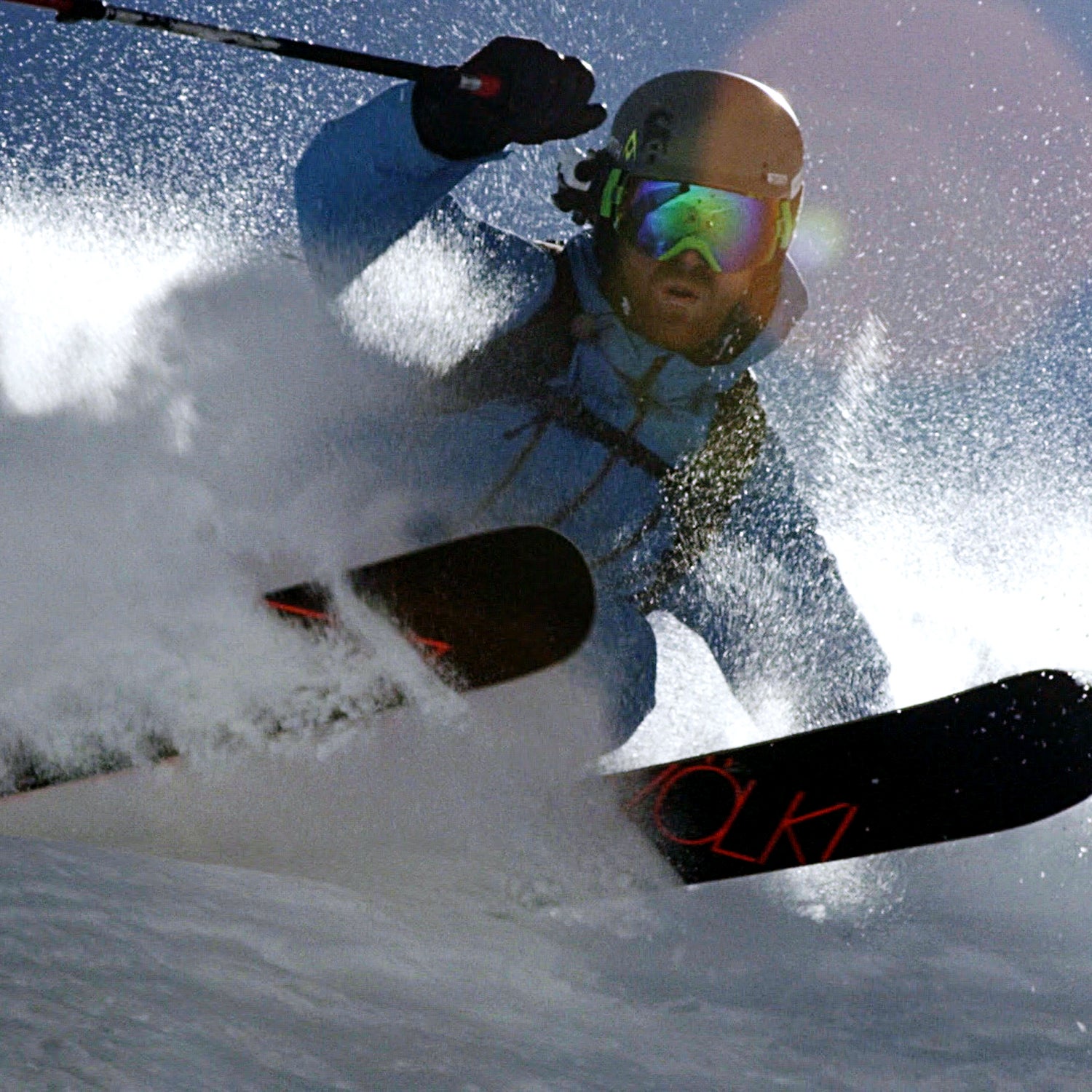Ian McIntosh was maybe five turns into a first descent of a jagged Alaskan peak when things went wrong. The 34-year-old Canadian pro skier was filming a segment for Teton Gravity Research and carving down a face the film crew dubbed “Daybreak Spines.” The light was playing tricks on him, and early-morning shadows made a long spine look easy to cross over. It wasn’t. McIntosh hit it hard and dropped five feet into a trough he didn’t know existed. Then he started rolling.
McIntosh says he was immediately certain of one thing: “I knew I was going to the bottom,” he says. “I knew I was going for a ride.” Then all he could think was, Am I going to get traumatically injured by tomahawking down this mountain? and Please be over.
You probably know this already—the whole Internet seemed to see McIntosh’s epic 1,600-foot tumble, which was caught on film during a shoot for the upcoming ski flick Paradise Waits. The clip went viral this week because of the spectacular nature of the fall—McIntosh plummets ass-over-heels down the height of the Empire State Building for more than 25 cringe-worthy seconds—but also because after coming to a stop he emerges on top of the snow, unbelievably fine. “I’m OK! I’m OK!” McIntosh says in the video.
“I’ve been filming skiing and snowboarding for 20 years,” says Todd Jones, co-founder of Teton Gravity Research, who filmed the fall from a helicopter. “I think that was the worst I’ve ever seen. It seemed so long from the behind camera, I’m just sitting there muttering, ‘Oh, my god, he’s not stopping. Oh, my God, I’ve never seen anything like this.’”
But you know who has? Hollywood stunt coordinator Kevin Scott. In fact, he’s made a good living staging some of the most intense falling sequences ever filmed, including an almost comically prolonged bone-cruncher in 2013’s Lone Survivor. According to Scott, McIntosh did everything right to survive a fall of this nature.
“When the video hit, I downloaded it to blow it up and see what he did,” Scott says. “It’s pretty amazing. I’m going to keep it as a reference. Because that’s everything you need to do to try to save yourself.”
“You’re putting your limbs out there to get broken, but you want to be a stiff board. If you become a snowball, there’s just no hope. It’s non-stop.”
First off, Scott says, McIntosh fell the right way. Rolling down head-over-heels—as opposed to sideways—allowed the skier to slow himself down slightly. Second, despite the dozens of impacts to McIntosh on his way down the mountain, he avoided coiling up into a ball, which would have carried him much faster, Scott says. Instead, McIntosh managed to splay out, which helped slow him down.
“You want to try to flatten your body out extend your arms and legs,” Scott says. “You’re putting your limbs out there to get broken, but you want to be a stiff board—you don’t want to be a ball. If you become a snowball, there’s just no hope. It’s non-stop.”
“He never stopped fighting,” Scott adds.
Stopping quickly was definitely in McIntosh’s best interest, and he knew it even in mid-tumble. “At the bottom of the mountain, the glacier pulls away from the mountains and you get these huge crevasses,” McIntosh says. He pulled the cord on his avalanche pack—an inflatable apparatus in no way designed to stop you from rolling a quarter mile down hill, but one that possibly helped protect his head and neck—in case he rolled into a crevasse.
Even though he did everything right, McIntosh says the fall was no picnic. “I equate it to a big-wave surfer going down huge on a big monster wave and getting bounced off the reef,” he says. “I couldn’t breathe in the snow. It’s like I went through the washing machine.”
McIntosh reckons he’s done 30 interviews since the tumble went viral. He’s good humored about it, but says he’d prefer not to be known globally as “the fall guy.”
“I think it’s a good opportunity to be like, ‘Hey people, check out my skiing!’” he says, laughing. “I actually stomp stuff a lot. It’s entertaining to watch that, too. It doesn’t have to be catastrophic falls only.”

